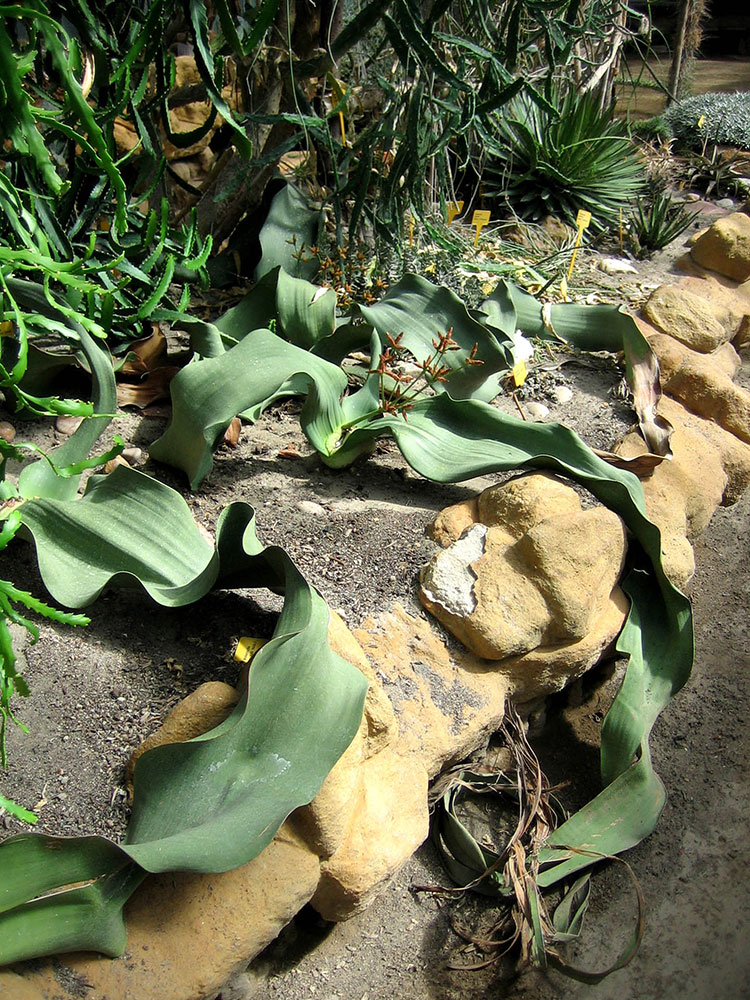Welwitschia mirabilis Hook. fil.
Famiglia: Welwitschiaceae
Common names: tumboa, tree tumbo, "tweeblaarkanniedood" (from Afrikaans, literally "two leaves to not die")
This species is exclusively found in the Namib Desert in southwestern Africa and possesses unusual characteristics. It has a highly developed taproot and two long, continuously growing leaves that can reach lengths of over 5 meters. These leaves are thick and leathery. The species is dioecious, and both male and female plants develop cone-like structures similar to those seen in conifers. Due to its peculiarities, Welwitschia mirabilis was regarded by Darwin as the botanical counterpart of the platypus. It is the only species in the order Welwitschiales and is classified in Gnetophytes, a highly distinctive group of plants that also includes the genera Gnetum and Ephedra. These entities exhibit features that appear intermediate between gymnosperms and angiosperms, and they have been the subject of intense debate among botanists, especially in the past. It is now known that they are conifers with aberrant morphology closely related to the Pinaceae. In nature, Welwitschia mirabilis is extremely long-lived, and some specimens have surpassed two thousand years in age.


 Sistema Museale di Ateneo
Sistema Museale di Ateneo